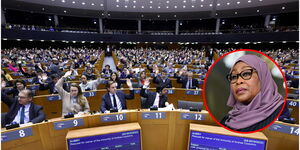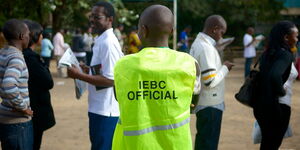Kenya is set to hold follow-up talks with the International Monetary Fund (IMF) next week, with the key agenda to strike a consensus on Kenya’s debt policies ahead of the new programme.
In an interview with Reuters on Tuesday, November 4, Treasury Cabinet Secretary John Mbadi revealed that the talks will be centered on the treatment of securitised debt, expressing confidence in reaching an agreement with the global lender.
Facing rising debts that risk the nation’s overall debt health, the government has come up with new ways to finance infrastructure projects, turning to the securitisation of some revenues and borrowing against them.
Mbadi revealed that while the government views the move to securitise as one that allows it to avoid accumulating more debt, the IMF wants the additional borrowing to be classified as normal debt, bringing a point of contention in the talks.
Securitisation refers to the process by which a government converts future revenue streams, such as taxes, royalties, or other public income, into immediate cash by issuing securities such as bonds or notes, backed by those future revenues.
It encompasses the creation of a Special Purpose Vehicle (SPV), a separate legal entity to isolate these future revenues from general government finances. The SPV is assigned the rights to collect or receive those future revenues.
The SPV issues asset-backed securities (ABS) to investors, using the expected future revenue as collateral. Investors buy these securities, providing the government (or SPV) with immediate funds. Over time, the future revenues that were pledged are used to repay the investors.
Proponents of this policy have credited it with its ability to raise immediate capital, reduce fiscal pressures, and improve debt management. However, critics have argued that it could lead to future revenue losses, debt transparency issues, potential misuse, and reduced fiscal flexibility.
This year, the government securitised the fuel levy to raise Ksh175 billion to pay contractors and restart over 580 stalled road projects. This involves selling future Road Maintenance Levy revenues to investors to generate immediate cash, which allows the government to pay pending bills without borrowing or raising taxes.
In this context, through securitisation, KRB sold the rights to a Special Purpose Vehicle (SPV) to receive a portion of the future Road Maintenance Levy, specifically Ksh7 from the current Ksh25 per litre levy. This meant that Ksh18 would go to KRB while Ksh7 would be used as security.
Kenya's $3.6 billion (Ksh465.1 billion) programme with the IMF expired earlier this year, and some officials have expressed interest in getting a new one that will include a lending component.
The new loan is expected to service external debt payments, and it comes after Kenya abandoned the final disbursement of approximately $850 million (Ksh109.9 billion), after struggling to meet key targets, including reducing its budget deficit and increasing tax revenue.
A team from the IMF had landed in the country in September to hold talks with the government on the new loan. In their visit, the team was expected to conduct a deep assessment of the country's economic and financial policies and a debt sustainability analysis before the lender gives a green light to a new funding agreement.
The IMF’s team visit to Kenya was the second in five months, after a team from the lender was dispatched to the country to conduct a two-week assessment of the country's anti-graft legal and institutional framework in June.












